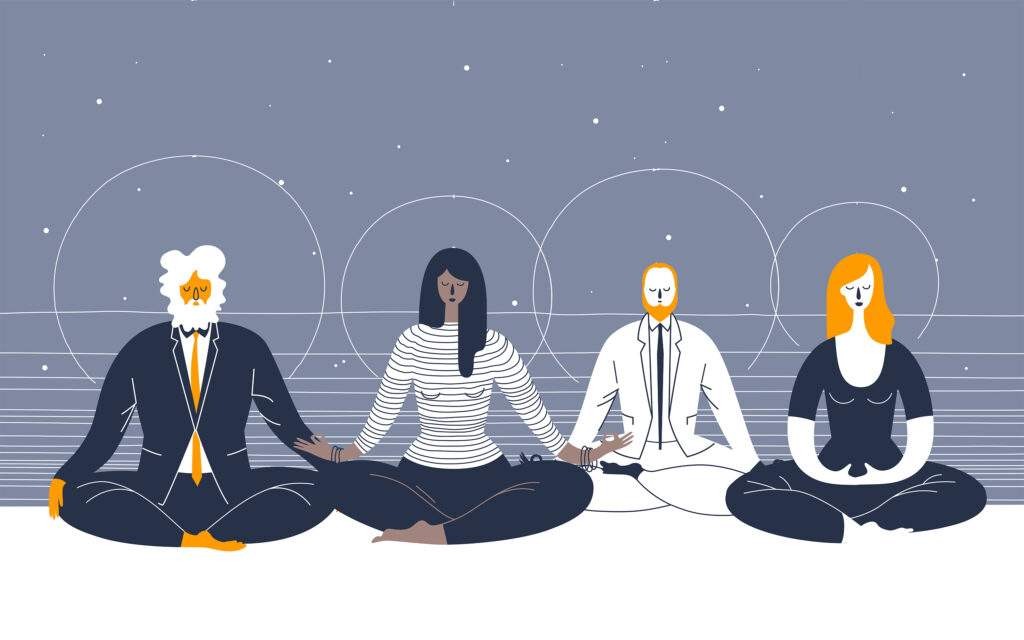Mindfulness meditation is a powerful tool for enhancing your well-being and navigating the stresses of daily life. If you’re new to mindfulness or meditation, this guide will provide you with a comprehensive overview of what it is, how to practice it, and the numerous benefits it offers.
Understanding Mindfulness and Meditation
Mindfulness: At its core, mindfulness is the ability to be fully present, aware of where you are and what you’re doing, without being overwhelmed by external stimuli or internal thoughts. It’s about recognizing and accepting your experiences—sensations, thoughts, and emotions—without judgment.
Meditation: Meditation is a practice that cultivates mindfulness. It involves training your mind to focus on a specific object, thought, or activity, such as your breath, in order to increase awareness of the present moment. It’s a way of exploring your inner world with curiosity and kindness.
Why Practice Mindfulness Meditation?
Mindfulness meditation offers a wealth of benefits for both your mental and physical health. Regular practice can:
- Reduce Stress and Anxiety: Mindfulness helps you become more aware of your stress triggers and develop coping mechanisms to manage them effectively.
- Improve Focus and Concentration: By training your mind to stay present, you can enhance your ability to focus on tasks and reduce mind-wandering.
- Enhance Self-Awareness: Mindfulness allows you to observe your thoughts and emotions without judgment, leading to a deeper understanding of yourself.
- Promote Emotional Regulation: By becoming more aware of your emotions, you can learn to regulate them more effectively, reducing reactivity and improving your overall mood.
- Deepen Connections: Mindfulness helps you be more present in your interactions with others, fostering empathy and strengthening relationships.
- Boost Creativity: By clearing your mind and fostering a sense of openness, mindfulness can unlock your creative potential.
- Improve Sleep Quality: Mindfulness can help calm your mind and relax your body, promoting restful sleep.
How to Get Started with Mindfulness Meditation
Here are some simple steps to begin your mindfulness meditation journey:
-
Find a Quiet Space: Choose a place where you can sit or lie down without being disturbed.
-
Set Aside Time: Start with just 5-10 minutes a day and gradually increase the duration as you become more comfortable. Consistency is key.
-
Sit Comfortably: Sit in a chair with your feet flat on the floor, or sit cross-legged on a cushion. Maintain a relaxed but upright posture.
-
Close Your Eyes (Optional): You can close your eyes to minimize distractions, or you can keep them open with a soft gaze.
-
Focus on Your Breath: Pay attention to the sensation of your breath as it enters and leaves your body. Notice the rise and fall of your chest or abdomen.
-
Acknowledge Wandering Thoughts: Your mind will inevitably wander. When you notice this, gently acknowledge the thought without judgment and redirect your attention back to your breath.
-
Be Kind to Yourself: Don’t get discouraged if your mind is busy. Mindfulness is a practice, and it takes time to develop. Be patient and compassionate with yourself.
Simple Mindfulness Meditation Techniques
- Breath Awareness Meditation: Focus solely on the sensation of your breath.
- Body Scan Meditation: Bring awareness to different parts of your body, noticing any sensations without judgment.
- Walking Meditation: Pay attention to the sensation of your feet making contact with the ground as you walk.
- Loving-Kindness Meditation: Cultivate feelings of love, compassion, and kindness towards yourself and others.
Integrating Mindfulness into Daily Life
Mindfulness isn’t just something you do during formal meditation sessions. You can also integrate it into your daily routines. Here are some examples:
- Mindful Eating: Pay attention to the taste, texture, and smell of your food as you eat.
- Mindful Listening: Give your full attention to the person you’re speaking with, without interrupting or formulating your response.
- Mindful Walking: Notice the sensations of your body as you walk, such as the feeling of your feet on the ground and the movement of your muscles.
- Mindful Handwashing: Focus on the sensations of the water and soap as you wash your hands.
Common Questions About Mindfulness Meditation
- Is there a wrong way to meditate? No, there’s no “wrong” way to meditate. The key is to keep returning your attention to the present moment when your mind wanders.
- Do I have to practice every day? While daily practice is ideal, even a few minutes of mindfulness meditation a few times a week can be beneficial.
- What if I can’t stop my thoughts? It’s normal for your mind to be busy. The goal isn’t to stop your thoughts, but to observe them without getting carried away.
- Can meditation help with anxiety? Yes, mindfulness meditation has been shown to be effective in reducing anxiety symptoms.
- Can mindfulness help with sleep? Yes, mindfulness meditation can help calm your mind and relax your body, promoting restful sleep.
More Resources for Mindfulness Meditation
- Guided Meditation Apps: Headspace, Calm, Insight Timer, and Ten Percent Happier are popular apps that offer guided meditations for beginners.
- Mindfulness-Based Stress Reduction (MBSR) Programs: MBSR is an eight-week program that teaches mindfulness techniques for managing stress, pain, and illness.
- Books on Mindfulness Meditation: “Wherever You Go, There You Are” by Jon Kabat-Zinn and “Mindfulness for Beginners” by Jon Kabat-Zinn are excellent resources for beginners.
Conclusion
Mindfulness meditation is a simple yet powerful practice that can transform your life. By cultivating awareness of the present moment, you can reduce stress, improve focus, enhance self-awareness, and promote overall well-being. Start with just a few minutes each day and gradually increase the duration as you become more comfortable. Be patient with yourself and enjoy the journey of self-discovery. Remember, the goal is not to achieve a state of perfect peace, but to learn to be present with whatever arises.


